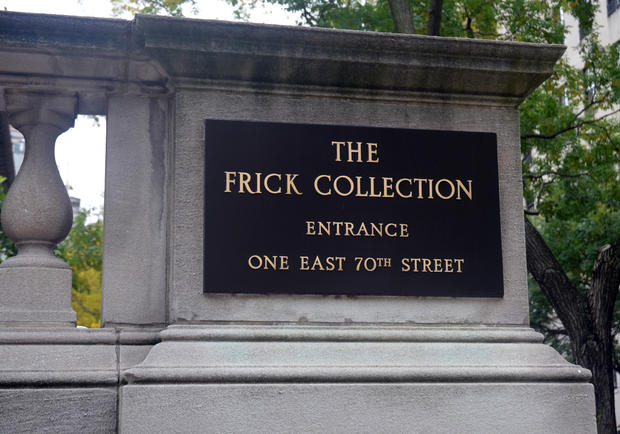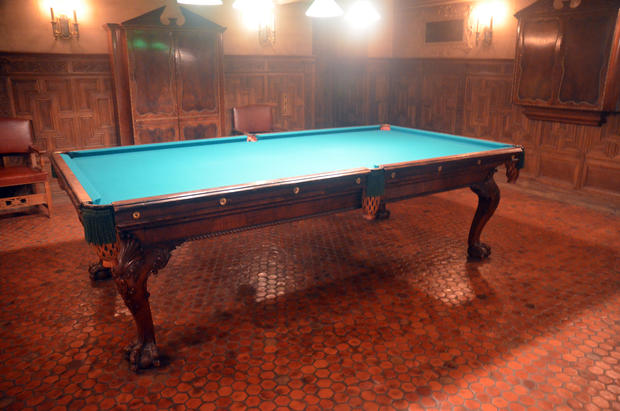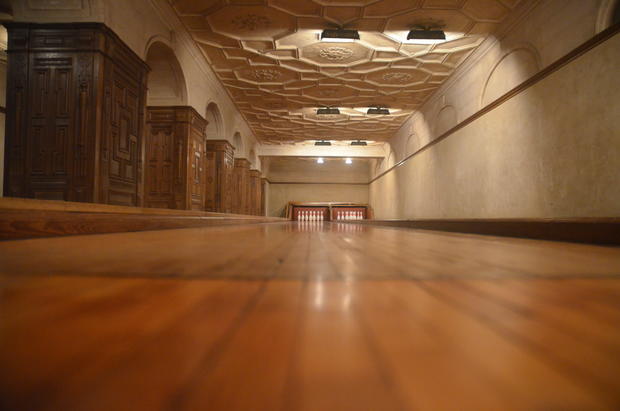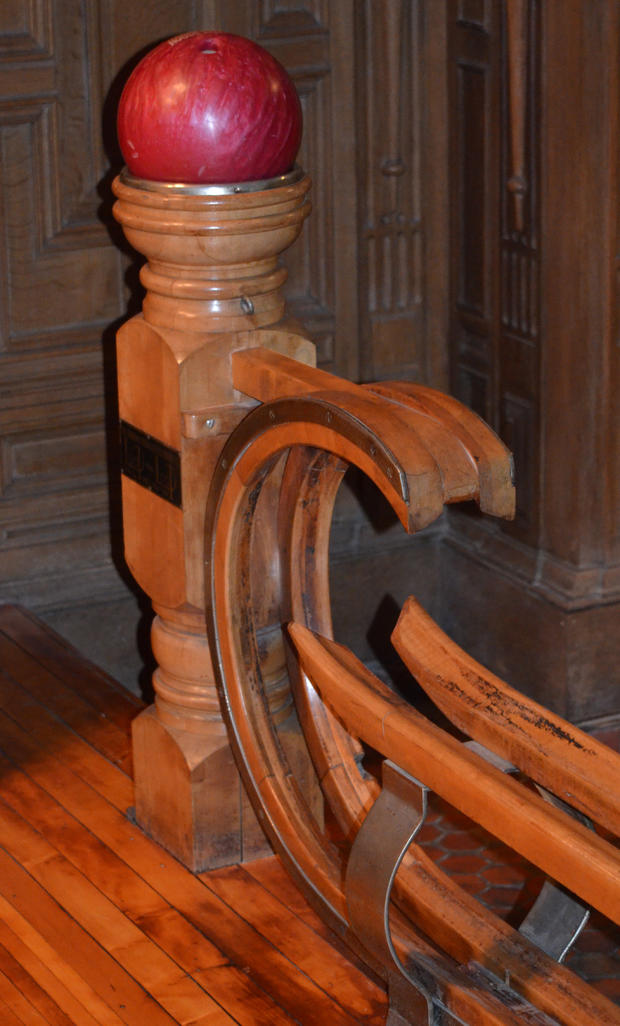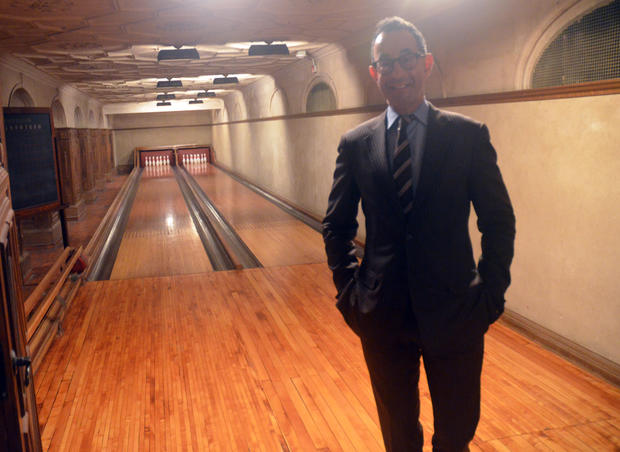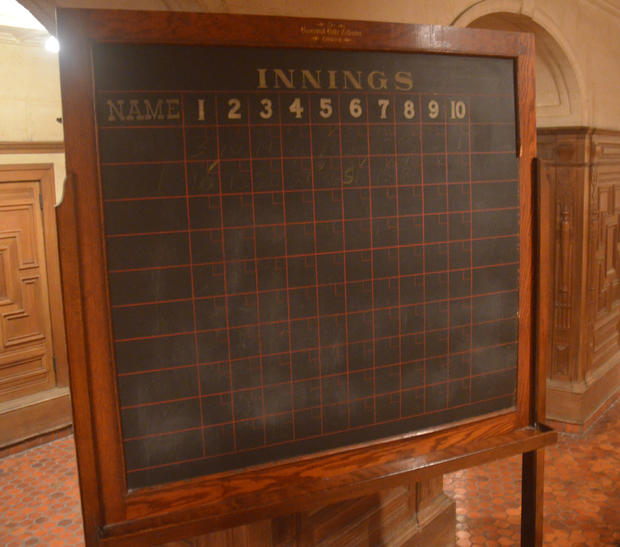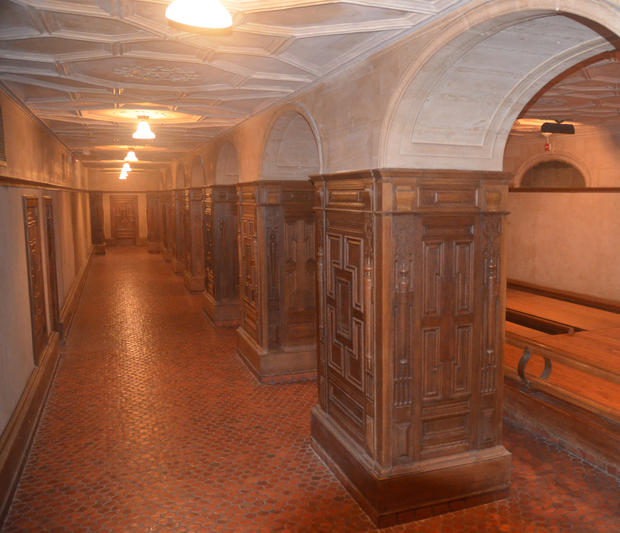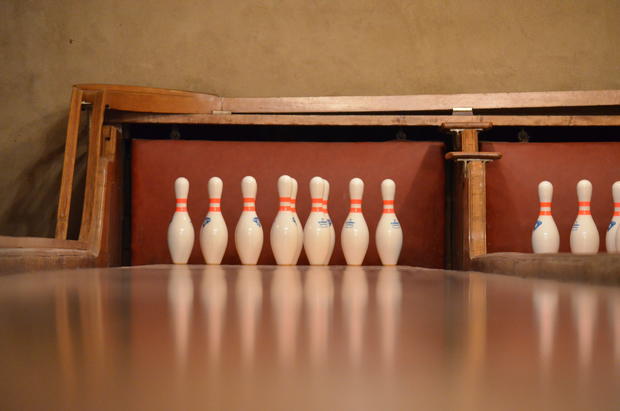Inaccessible New York: The Frick Collection Bowling Alley
by Evan Bindelglass, CBSNewYork.com
NEW YORK (CBSNewYork) – New York is the city that never sleeps, full of wonder and curiosities. There is an abundance to see, including many places that are free. Then there are the sites you can't even buy a ticket to go see. Those are the places we'll explore in this new series – Inaccessible New York.
Our first stop is on the Upper East Side, at the Frick Collection located at 70th Street and 5th Avenue, on Museum Mile. It is the former mansion of steel magnate Henry Clay Frick and was completed in 1914.
Several floors below the surface sits what is likely the city's most elegant bowling alley and billiard room. Frick commissioned his architects to create it shortly after completion of the mansion. It was finished in 1916.
LISTEN: Colin Bailey On The Frick Bowling Alley
It features a walnut billiard table, which could also be used to play pool.
The two-lane bowling alley was, at the time, state-of-the-art. Nobody would have expected any less from Mr. Frick.
It had the latest in ball return technology and balls that were not made of wood, but of an advanced composite rubber.
Colin Bailey, Deputy Director and Chief Curator of the Frick Collection, said that because Frick was a meticulous bookkeeper, they still have receipts for everything.
Despite having a bowling alley, which was still a very modern game back then, the architecture, particularly in the billiard room, evokes 17th and 18th century England.
When the lights are turned on and you first see the bowling alley, you, of course, think of the 2007 film "There Will Be Blood." The staff of the museum, of course, thought of this space when they saw the movie.
Sadly, Frick didn't have long to enjoy the space. He died in 1919.
Then his daughter, Helen Clay Frick who founded the Frick Art Reference Library which was built next door to the mansion, took over the space.
"She used this space, not for bowling, not for billiards, but for books," Bailey said. "...and she used it as sort of a storage house, a storeroom for the library she was creating and the massive number of books, photographs, documents, monographs that she was acquiring from all over Europe and America and therefore it sort of lost its function as a recreation room," Bailey said.
Fortunately, like so many great spaces in this city, such as the old Penn Station, it was not lost forever.
In 1997, it was carefully restored and Bailey said you feel that you "are in a space that Frick and his family inhabited."
Now, the space isn't one that the public gets to see, but it's there and that should give comfort to those who hate to see the past just fade away.
The main reason it isn't open to the public is that it just isn't very accessible physically. You have to go down several flights and then follow a series of twisting corridors. It would be something of a fire hazard to continuously have the public in and out of it.
For the most part, only select people in the Frick membership – and the odd lucky journalist – get to see the room. As a special treat, the guests usually get to bowl a frame, and once you do, you feel like you've joined some exclusive club.
"We feel that, just like works of art... we feel an obligation to maintain and to hold in good condition for whatever happens in the future," Bailey said. "So, this is a room that has had a lot of attention and it's an occasional visit and it's wonderful to have that type of space that we can still show on occasion to our public."
Do you know of any other "inaccessible" sites you'd like us to explore? Leave your suggestions below.
Special thanks to Alexis Light, Manager of Media Relations and Marketing at the Frick, for her generous assistance.
You can follow Evan Bindelglass on Twitter @evabin.

